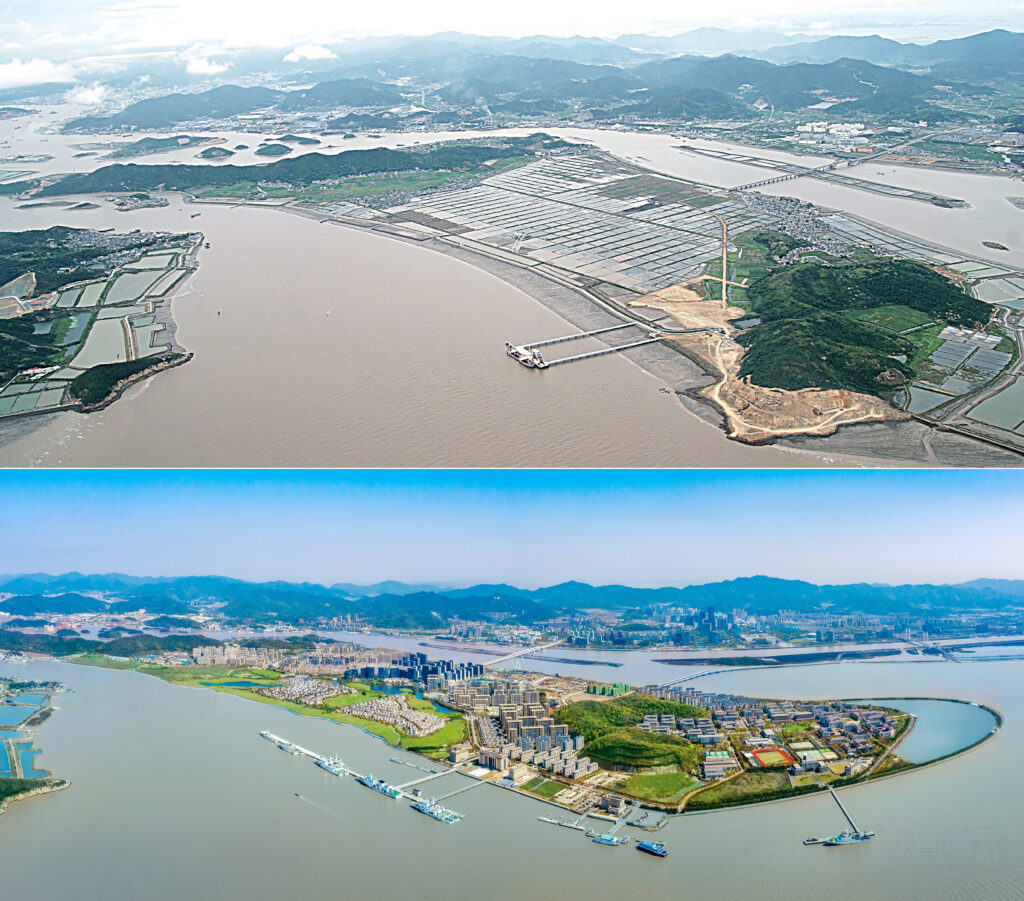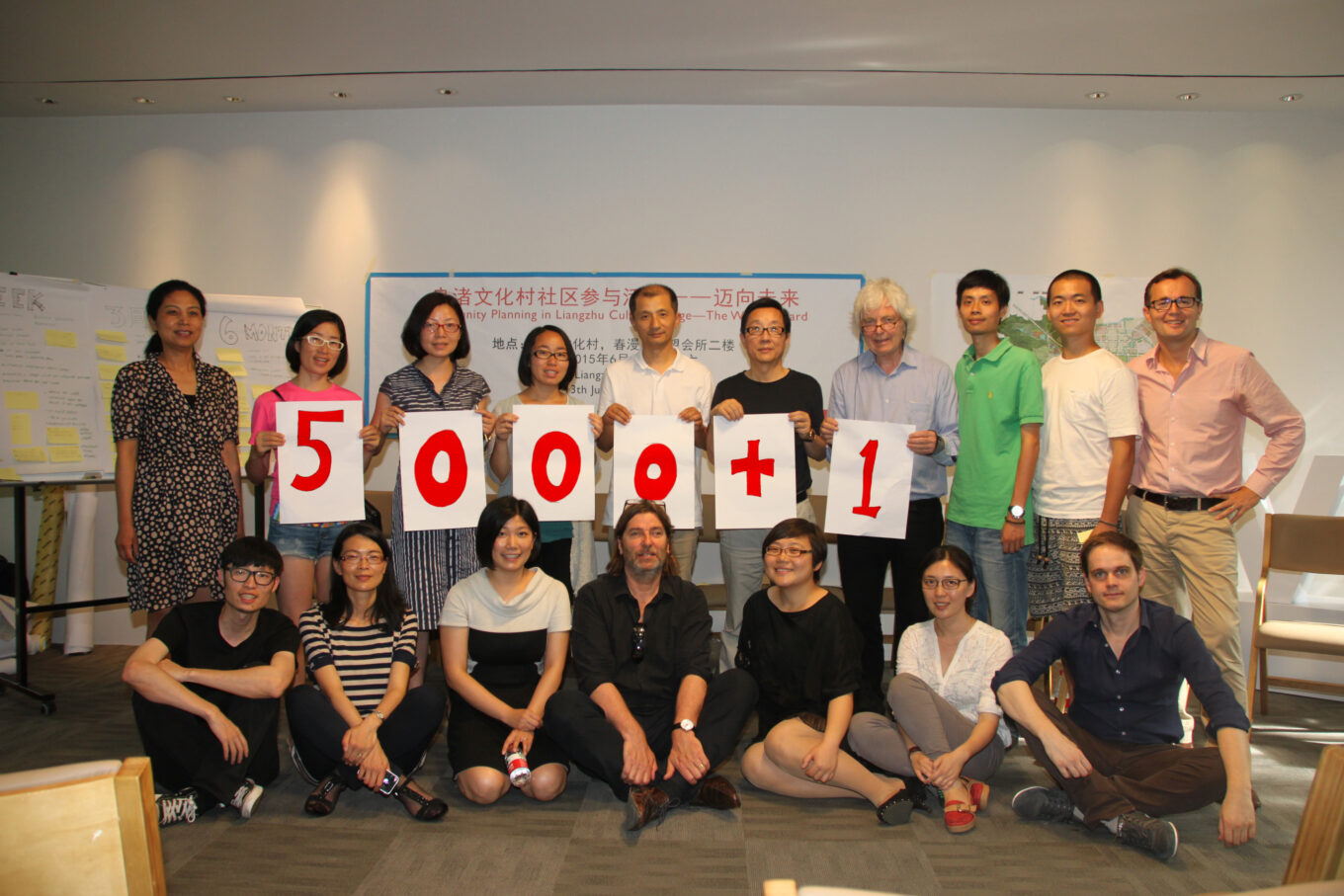Yingying Tian Remembers the legacies that John Thompson left in China: towns, communities and inspired people
 The year of 2009 is still like a whirlwind in my memory when JTP started to work in China – trips, visits, meetings, workshops, charrettes and report backs – full of exciting moments helping local people building visions for ‘Better city, better life’[1]. John called this his China adventure. At that time, unlike the bleak economy in the western world, China was experiencing accelerated growth and urbanisation. Cities started to plan new towns and regeneration schemes, and developers started to explore larger new settlements and new towns.
The year of 2009 is still like a whirlwind in my memory when JTP started to work in China – trips, visits, meetings, workshops, charrettes and report backs – full of exciting moments helping local people building visions for ‘Better city, better life’[1]. John called this his China adventure. At that time, unlike the bleak economy in the western world, China was experiencing accelerated growth and urbanisation. Cities started to plan new towns and regeneration schemes, and developers started to explore larger new settlements and new towns.
Impressed by John’s determination and enthusiasm, Greentown Group invited JTP and Gillespies to work on the master planning and redevelopment of the 400ha Changzhi Island scheme in Zhoushan, part of an archipelago in the East China Sea. The intention was to create a settlement of 50,000-60,000 inhabitants with a wide range of commercial, educational and community facilities. We organised an 8-day intensive charrette led by John in Zhoushan’s local hotel, where urban designers, landscape architects, local architects, the developer and government departments brought ideas together and produced the vision that was finally delivered by Zhoushan Greentown. The highlight of the charrette and the resulting masterplan was the story line conceived by John — the development of a settlement should follow the rationale of the natural growth of human settlements that can be learned from traditional Chinese and western towns, rather than imposed by pre-set forms or modern planning theories. Places created in this way would have more vitality and viability.
Five years later John and JTP were invited back to carry out the detailed urban design for the town centre. A proposal for a mixed-use walkable town centre was created in a weeklong charrette led once more by John, but this time in partnership with local residents and Zhoushan Oceanographic University which had opened on site. It was a stimulating event, where original and new residents, university students and staff and government officers were brought together to discuss sustainable lifestyles and the needs of a town centre. At the time it was a new way of thinking about the development of large settlements in China, and was very influential with local architects, developers and the community.
It’s now fourteen years since John and JTP’s first visit to Changzhi Island. The island has been transformed to a vibrant town with 25,000 residents, 15,000 university students and staff with full range of educational, healthcare, recreational, retail, leisure, cultural and community facilities. The development will see its completion between 2028-2030. Mr. Yuejun Mao, Director of Zhoushan Greentown commented: ‘Changzhi Island is becoming a desirable place that people want to live and work in Zhoushan. I wish John had a chance to see today’s Changzhi Island – he would be very pleased that we have developed Changzhi Island following the way that he has envisaged and guided, and have realised most of the original visions for an ideal town’.

This legendary project not only promotes sustainable placemaking ideas for new settlements but also introduced a new way of master planning to China based on a process of co-creation with local stakeholders, partners and communities. This has greatly inspired developers and local architects who have carried on this approach in the development of Changzhi Island and elsewhere. John went on to lead more master planning projects in China, such as Hainan Clear Water Bay Resort Town in Sanya and Suzhou West Area Eco- town, and both are in the progress of development.
2015 was the last year that John flew to China to lead projects in person. That was for an exciting community planning event for Liangzhu Culture Village in western Hangzhou and John was very keen to go. It was a new town developed by China’s largest residential developer Vanke Group, about 330ha, aiming to accommodate 40,000 residents by the mid 2020s.
The scheme was adjacent to a major archaeological site, the last Neolithic Jade Culture in the Yangtze River Delta with a history dated back to 3000 BCE. This 5,000 year old civilisation was celebrated with the creation of the Culture Village–a museum, a church, a cultural centre, and retail and commercial facilities alongside the housing development. About 10,000 residents had moved into the town by 2015. The town was managed by Hangzhou Vanke but they would leave after finishing the development. The purpose of the community planning event was to help the community and stakeholders think about how to take the town forward. After two days of workshops, hands-on-plannings and report backs, a consensus emerged that the community should get involved in the governance and take on the stewardship for the long-term development of Liangzhu Cultural Village.
The enlightened moment of the event was John proposing the concept of a 5,000+1 Vision meaning that the Liangzhu community would add to the site’s long history a concept that immediately resonated with the participants. Lots of passionate residents were attracted to the events, contributing ideas and starting to conceive the idea of a self-governance structure such as a village committee, to lead the community towards a sustainable future. As a result of this event, Liangzhu Culture Village Community Trust was officially established in 2018. It was a self-financed independent charity, initiated by 20 resident trustees and further 200 Liangzhu residents, dedicated to work for the long-term management and development of Liangzhu Culture Village. Yihan Shen, one of the active participants at the event and now the Chairman of Liangzhu Community Trust, said: ‘Without John’s inspiration and encouragement, we would not have started this community trust. We are very proud that the community trust has become an important part of people’s life in Liangzhu. Last year, we had more than 30 projects, 49 donations, 100 events and 500 volunteers’.
For 7 years that John had worked in China he left a legacy of new settlements and towns, but he also inspired so many people, inspiring them to carry on managing the future of their communities and towns. He will be deeply missed by all of us especially by his Chinese clients, colleagues and the communities he worked with.
Dr. Ying Ying Tian was an Associate of JTP and s now Founder of Heal by Design Studio and Director of Architecture and Urbanism at China Design Centre based in London.
[1] ‘Better City, Better Life’ was a slogan of Shanghai Expo 2010. It was put up on an advertisement board just outside Pudong Airport, and was the first image John captured in his camera and mind for China.





